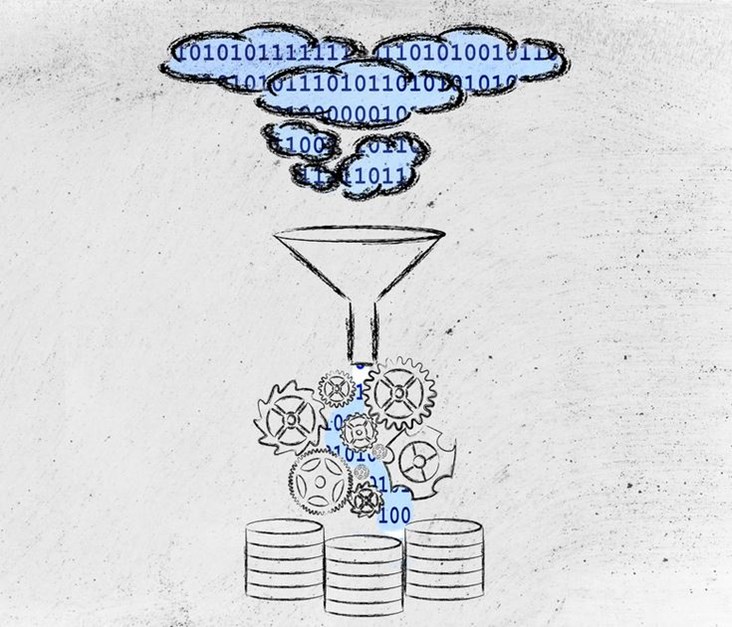
What is hot in web and mobile in 2014? Well this year ArabNet hosted all of Ben Parr, Cofounder and Managing Partner of Dominate Fund, Benjamin Levy, Partner at BootstrapLabs, along with Jon Soberg, Cofounder and General Partner at Expansive Ventures and Faysal Sohail, General Partner at CMEA Capital and got them to weigh in on the subject.
But before we get into that, let’s have a quick recap of what happened over the past 12 months. Twitter went public, and disappointingly so, Alibaba on the other hand claimed the title for largest global IPO ever at a whopping twenty five billion dollar valuation. There was a few other ten digit valuations in the social space: Facebook’s acquisition of Instagram for a billion dollars, a three billion bid for Snapchat and Pinterest got valuated at five. And if you think that’s big, Facebook bought WhatsApp for $19B. Similar moves for voice over IP companies included Alibaba’s $215M investment in Tango, and Rakuten paying just short of a billion for Viber. Google bought Nest, invested in Uber and released Glass to the public. 3D printers made further advances into mainstream adoption while following Google and Apple’s move could soon see wearables become staple shelf products in electronic stores.
Moderate by ArabNet CEO Omar Christidis, the panel tackled a number of issues, including:
What is hot right now?
And what better way to gauge what’s hot in Silicon Valley than to ask four of the most prominent figures in the sector about their favorite startup. For Faisal Sohail that would be Luminate, a leading in-image advertising and related content network. What’s interesting about Luminate is that it tackles an area that has been underserved. Google has done a tremendous job monetizing word search. Luminate is trying to do the same with pictures. Ben Parr has two favorites: Humin and Connect. They’re quite similar, both try to give context around your contacts and friends. Based on where you are, these services can show who’s close by and will auto load all their social profiles so that you know what they’ve been up to. This adds a new layer of value on top of more traditional social networks that merely link profiles together. Jon Soberg points out to applications that handle big data behind the scenes as an area of interest, particularly, he mentions a credit rating service for enterprise based in Germany called Kreditech. The company is able to offer micro-loans to customers based on social and commerce data. Finally, Benjamin Levy’s favorite is AI company Emospark. What’s special about it is that it adds a new dimension to artificial intelligence: emotions. It’s system seek to understand human behavior and mapp feelings to data collections. “That’s where we are going, a hint of the future.” So to wrap up: image content, context, big data and emotions.
The key trends, and the one that failed (starts at 4:58)
Following the same format - one question directed to all four panelists - the discussion moved to address key trends and ones that fizzled. Social will make its way onto devices other than smartphones joining hands with the smart home movement, so expect to see digital billboards that show customer interacting at a restaurant soon. There is disruption in the venture landscape as well. A more connected world means that venture is going global . 80% of users of the top twenty five tech companies in the US come from outside the country. The number of people with connected smartphones is expected to rise to two billion by the end of 2014. Now, more than ever, you are able to build value with less resources and capital.
A trend that failed? Well not entirely, at least not yet, but wearables are having their share of trouble and need help. People who have bought a wearable device, on average, drop it three weeks later. Insufficient battery life is the route of the evil keeping it from becoming mainstream.
Which industries will be disrupted by smart devices or automation (starts at 11:40)
Home robots fit both of these trends. They could be small devices that scrub your floor at home for example, and they’re smart too. They create and save maps of their environment to better navigate their way. Healthcare is perhaps where wearables might be able to find a better future. The healthcare industry is valued between 2.7 and 2.9 trillion dollars a year, 600 billion of these are in preventative care, and this is where wearables might take off. Its main competition could very well be smartphones. During WWDC 14, Apple announced a number of features that allows developers to integrate health readings and build apps around them. Healthcare entities take a long time to make decision and as such, they are slow in adopting these technologies. It’s hard on their budgets, it’s risky, and there is a lot of regulations. The better route involves companies or developers that have relations with health institutions.
What’s next for chat apps (starts at 19:03)
“When you have a 19 billion dollar acquisition, you know it’s starting to mature in someway!” But why was this acquisition so critical for Facebook? Because everyone is on the app, because it’s global, and most important, because frequent one to one communication is more valuable and easier to monetize than one to many communication. Is there opportunity left in the market? absolutely, but since it’s maturing, any new entrant hoping for a big break must present something radically different. The trend suggests that people right now are using different apps that do the same thing. They segregate different types of acquaintances to different chat apps. Big players moving in might change that soon. Apple for instance baking chat into it’s OS could in the long run swallow up users.
The curious case of Snapchat (starts at 23:04)
Why is Snapchat so popular? First, the interface, although somewhat complicated, compared to something like WhatsApp, is unique and clever. There is an element of gamification in its video capture button. But a much bigger factor in Snapchat’s popularity is the fact that it doesn’t permanently capture images. This makes it ok to snap bad ones. On Facebook, pictures are permanent, so each one must be perfectly executed. On Snapchat, a picture is a mean to simply pass on information. It doesn’t leave a permanent record. “It’s the non searchable web.”
Where are the opportunities of emerging markets (starts at 30:18)
For investors, copycats are a-ok. They’ve see hundreds of copies in Silicon Valley too. Localising is a hard. The infrastructure that exists in the US is very different from emerging markets, so investors really value entrepreneurs that are able to take something that works and apply it somewhere else. It is definitely nothing to be shy about or looked down upon.
Arabic is one of the four languages, along with english, chinese, and spanish that makes scaling easier. All four have a huge number of speakers, some span continent and some reach over oceans. Contrast that with Europe, where local startups usually have a hard time growing beyond their border.
What is it going to take to attract the big VCs? (starts at 35:14)
Exits. Big ones. Global early stage investment, angel investors and small funds have made multiple entries into the region, but ultimately, the bigger, London and Silicon Valley players won’t move until they see that this part of the world can produce exits in the next five to seven years.
Big funds are unlikely to move. Local companies will have to scale, grow beyond their border to catch their attention. Having a bit hit on your hands helps too. Hits guarantee multi billion dollar exit every couple of years. That money gets reinvested in the ecosystem, gives birth to new angels, new funds, and so on.
You can watch the panel below. See you next year!
Latest Business
Intelligence Report













